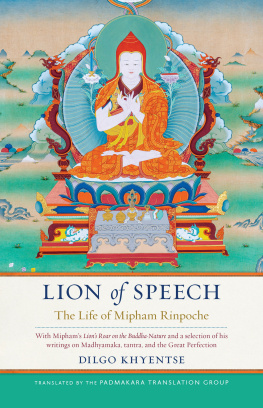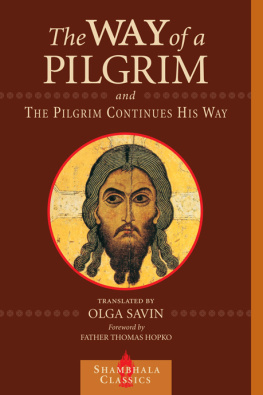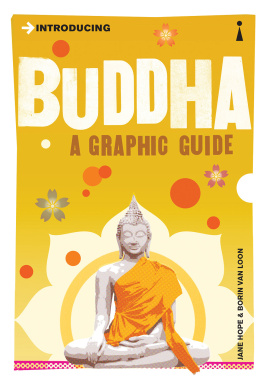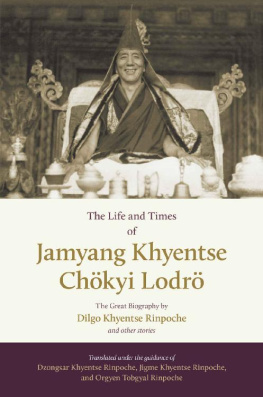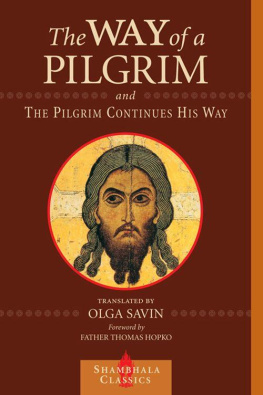Khyentse - Best foot forward : a pilgrim’s guide to the sacred sites of the Buddha
Here you can read online Khyentse - Best foot forward : a pilgrim’s guide to the sacred sites of the Buddha full text of the book (entire story) in english for free. Download pdf and epub, get meaning, cover and reviews about this ebook. City: India., year: 2018, publisher: Shambhala, genre: Religion. Description of the work, (preface) as well as reviews are available. Best literature library LitArk.com created for fans of good reading and offers a wide selection of genres:
Romance novel
Science fiction
Adventure
Detective
Science
History
Home and family
Prose
Art
Politics
Computer
Non-fiction
Religion
Business
Children
Humor
Choose a favorite category and find really read worthwhile books. Enjoy immersion in the world of imagination, feel the emotions of the characters or learn something new for yourself, make an fascinating discovery.

Best foot forward : a pilgrim’s guide to the sacred sites of the Buddha: summary, description and annotation
We offer to read an annotation, description, summary or preface (depends on what the author of the book "Best foot forward : a pilgrim’s guide to the sacred sites of the Buddha" wrote himself). If you haven't found the necessary information about the book — write in the comments, we will try to find it.
Khyentse: author's other books
Who wrote Best foot forward : a pilgrim’s guide to the sacred sites of the Buddha? Find out the surname, the name of the author of the book and a list of all author's works by series.
Best foot forward : a pilgrim’s guide to the sacred sites of the Buddha — read online for free the complete book (whole text) full work
Below is the text of the book, divided by pages. System saving the place of the last page read, allows you to conveniently read the book "Best foot forward : a pilgrim’s guide to the sacred sites of the Buddha" online for free, without having to search again every time where you left off. Put a bookmark, and you can go to the page where you finished reading at any time.
Font size:
Interval:
Bookmark:

Also by Dzongsar Jamyang Khyentse
The Guru Drinks Bourbon?
Not for Happiness
What Makes You Not a Buddhist

Shambhala Publications, Inc.
4720 Walnut Street
Boulder, Colorado 80301
www.shambhala.com
2018 by Dzongsar Jamyang Khyentse
All rights reserved. No part of this book may be reproduced in any form or by any means, electronic or mechanical, including photocopying, recording, or by any information storage and retrieval system, without permission in writing from the publisher.
Ebook design adapted from printed book design by Gopa & Ted2, Inc.
Cover art and design: Andreas Schulz
Library of Congress Cataloging-in-Publication Data
Names: Khyentse, Jamyang, 1961 author.
Title: Best foot forward: a pilgrims guide to the sacred sites of the Buddha / Dzongsar Jamyang Khyentse.
Description: First Edition. | Boulder: Shambhala, 2018. | Includes bibliographical references and index.
Identifiers: LCCN 2017053035 | ISBN 9781611806267 (pbk.: alk. paper)
eISBN9780834841475
Subjects: LCSH : Buddhist pilgrims and pilgrimagesIndia.
Classification: LCC BQ 6330 .K49 2018 | DDC 294.3/4350954dc23
LC record available at https://lccn.loc.gov/2017053035
v5.3.2
a
T HE TRADITIONAL PRACTICE of going on pilgrimage has been encouraged by all the great religions of the world for millennia. Part of the appeal is that making a pilgrimage gives spiritual seekers the opportunity to take the kind of holiday that combines having fun with virtuous actionand for many of us, the idea of visiting somewhere exotic is far more appealing than some of the more austere practices our traditions advocate. Of course, the pursuit of pleasure shouldnt be the only reason for going on a pilgrimage. But it is, without doubt, a very effective carrot for inducing materialistic Buddhists like myself to do any practice at all and can be accomplished relatively simplywhich is encouraging.
The purpose of a spiritual pilgrimage is, generally speaking, to visit somewhere holy. Where and what holy is changes depending on the spiritual tradition and approach being followed. A place might be holy because a particular savior or messiah was born or murdered there, or a nail or piece of wood might be holy because a saint blessed it. From a Buddhist point of view, a person, an object, or even a moment in time is described as being holy if it hasnt been stained or defiled by human greed and aggression or, more importantly, by a judgmental and dualistic mind. So strictly speaking, there is no need for any of us to seek out external holy places or holy people. As Lord Buddha himself promised, Whoever thinks of me, I am in front of them. Therefore, wherever we are, the moment we think of or feel devotion for the Buddha or his teachings, he will instantly be with us and that place will become holy. But no matter how many times this is explained to us, our clever, pessimistic and skeptical minds simply dont buy it. That alone makes us quite different from Ben of Kongpo.
Ben was a sublime being with a great wealth of merit and absolute trust, whose simplicity and pure devotion effortlessly obliterated the boundaries of conditioned perception. Throughout his life, Ben heard stories about the famous statue of Shakyamuni Buddha in Lhasa, known as Jowo Rinpoche. It was, and still is, considered to be one of the holiest images in Tibet. Ben longed to see Jowo Rinpoche with all his heart, but the journey from Kham was long and arduous, so it was many years before he finally set out for Lhasa.
The day he arrived, the Jokhang Temple was unusually empty and Ben was able to walk right up to the statue he had traveled so far to see. The moment he set eyes on Jowo Rinpoches smiling, golden face, he liked what he saw. Enraptured, he gazed at the statue for a very long time.
Eventually, Ben noticed the tormas, offerings and butter lamps that surrounded this very nice lama, but couldnt think what they were there for.
I suppose, thought Ben, that its the lamas food. Perhaps the polite thing to do would be to share his meal with him?
So Ben helped himself to a large torma, dunked it in some melted butter, and ate with great relish.
When hed finished eating, Ben decided he should do some circumambulations. But he had a problem. To do kora (circumambulations), he would have to take off his boots, but where could he leave them? Where would they be safe?
Perhaps, he thought, this nice lama will look after them for me.
He dropped his boots at Jowo Rinpoches feet, then set out to do some circumambulations. Not long after he had left the temple, the Jokhangs caretaker wandered in to tidy up and could hardly believe his eyes when he saw the oldest, dirtiest, most disreputable pair of boots lying at the feet of the precious Jowo Rinpoche. Scandalized, he ran over to the statue to remove them, but was stopped in his tracks by the sound of a voice that seemed to be coming from Jowo Rinpoche himself.
Dont take those boots away! commanded the statue. Leave them where they are. They were entrusted to me by Kongpo Ben!
The caretaker was so astonished that he did as he was told, then hurried away.
When it was time for Ben to return to Kham, he went back to the statue, thanked him for taking care of his boots, and invited Jowo Rinpoche to visit his home in Kongpo. Without a moments hesitation, the statue replied, Yes, Ill come!
According to Patrul Rinpoche, Jowo Rinpoche visited Ben and his wife the following year, then dissolved into a rock near their house. To this day, that rock is said to be just as holy as the Jowo Rinpoche statue in Lhasa.
There are many stories like simple-minded Bens about people whose devotion was so pure that the sincerity of their longing actually created holy places and invoked the physical presence of holy beings. Lodr, for example, whose great devotion was for the bodhisattva Manjushri.
One evening, Lodr came across a passage in a book that thrilled him to his very core. Manjushri, he read, had vowed three times that he would show himself to anyone who traveled to Mount Panchashisha. For Lodr, this was the most wonderful and inspiring of discoveries, and that night he didnt sleep a wink. The moment dawn broke, without even thinking about breakfast, he ran to his masters house to ask permission to visit the mountain and to request his blessings.
At first, Lodrs master tried to convince his breathless student that such a journey, fraught with danger and hardship, was entirely unnecessary. But Lodr would not be convinced. Again and again, he begged to be allowed to go, until eventually his master gave in and agreed.
In those days, traveling was difficult. Everyone in Lodrs family, all his friends, and many of his neighbors took every opportunity to point out just how risky and hazardous the journey to Mount Panchashisha would be. Undaunted, Lodr packed several months worth of food and medicine, loaded it onto the back of his old donkey, waved goodbye, then set off across the Tibetan plateau. The journey was tough and took several months, and Lodr experienced many of the adversities he had been warned abouthe had to find his way across several fast-flowing rivers and barely survived the punishing heat of the empty deserts, where his only companions were venomous snakes and wild animals.
Font size:
Interval:
Bookmark:
Similar books «Best foot forward : a pilgrim’s guide to the sacred sites of the Buddha»
Look at similar books to Best foot forward : a pilgrim’s guide to the sacred sites of the Buddha. We have selected literature similar in name and meaning in the hope of providing readers with more options to find new, interesting, not yet read works.
Discussion, reviews of the book Best foot forward : a pilgrim’s guide to the sacred sites of the Buddha and just readers' own opinions. Leave your comments, write what you think about the work, its meaning or the main characters. Specify what exactly you liked and what you didn't like, and why you think so.




